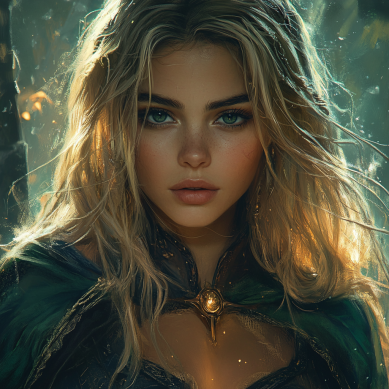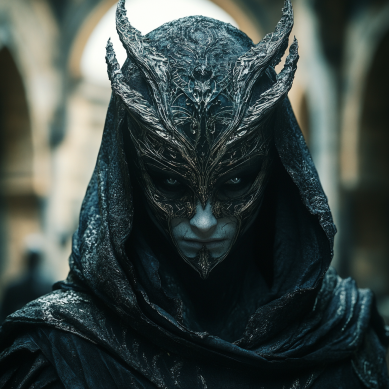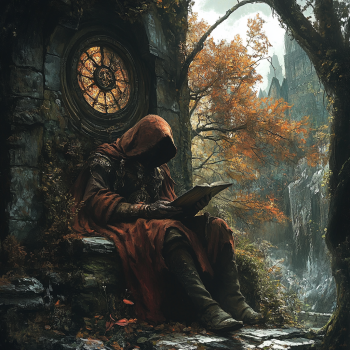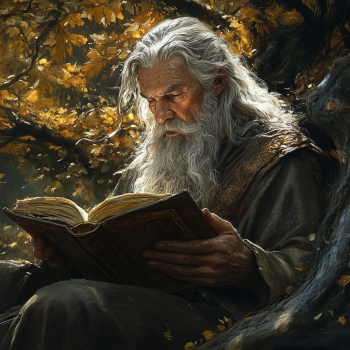Disclaimer: This post contains affiliate links. This means I may earn a commission should you choose to sign up for a program or make a purchase using my link.
There’s something magical about getting lost in a good fantasy novel—the kind that sweeps you away into another world and keeps you up at night because you just have to know what happens next. But what makes these stories unforgettable? Sure, epic battles, rich world-building, and a touch of magic all play a part. But at the core, it’s always about the characters, the heroes we root for, the villains we love to hate, and the legends that feel larger than life.
I want to walk you through how to design fantasy characters that linger with readers long after the book closes and spring off the page. We’ll explore three crucial types: Heroes, Villains, and Legends—and how to bring them to life in a way that makes your story shine.
Disclaimer: This post contains affiliate links. This means I may earn a commission should you chose to sign up for a program or make a purchase using my link. It’s okay – I love all of these companies anyways, and you will too!

1. Heroes: The Beating Heart of Your Story
What Makes a Great Hero?
When we think about fantasy heroes, we often envision the chosen ones. Characters destined to save the world, wield strong magic, or defeat the story’s main villain. But the best heroes are far more than that. They are multifaceted, fallible, and even a little messy, just like real humans. No one likes to read a story where in the main character can do no wrong and is all powerful. Here’s how to make a hero feel genuine, relevant, and deserving of a reader’s investment:
- Complex Motivations: A hero is more than just someone who acts good for the sake of being good; their actions must be justified. Perhaps they are motivated by a feeling of duty, like Frodo Baggins in The Lord of the Rings, or they crave vengeance, like Arya Stark in Game of Thrones. Whatever it is, make your Hero’s motivations personal and grounded on their history and personality.
- Flaws and Vulnerabilities: Perfect heroes are dull. Would you connect with a character who never makes mistakes or always knows exactly what to do? Flaws are what make heroes human. Maybe your hero is stubborn, impulsive, or struggles with trust. These imperfections not only make them relatable but also create room for growth. They also provide great opportunities for conflict, both internally and externally. Bring on the drama!
- Moral Ambiguity: Not all heroes are entirely noble and don’t always make the right choices. In The Witcher series, characters like Geralt of Rivia live in shades of gray, where it’s not always clear what the “right” choice is. Because it’s like making choices in real life, this moral ambiguity makes heroes seem more real and exciting.
How to Build Your Hero’s Journey
Creating their arc takes more than simply outlining the hero’s journey. Following their emotional and psychological development from the beginning to the last page of your story or series is what it’s all about. Consider these steps when you plot out your hero’s journey:
- The Call to Adventure: Every hero needs a reason to step out of their comfort zone. This could be an external call, like Frodo’s mission to destroy the One Ring, or an internal desire, like Harry Potter’s longing to find his place in the world. Whatever it is, make it compelling enough to pull them into action.
- Challenges and Temptations: The road should never be easy for a hero. They should face both physical obstacles and internal struggles that challenge their core beliefs and force them to grow. In A Song of Ice and Fire, Jon Snow is repeatedly tested between his sense of honor and his personal desires, which adds layers to his character and keeps readers invested.
- Transformation and Growth: By the end of the story, your hero should be different from who they were at the start. This transformation could be subtle or dramatic, but it must feel earned. Think of Aragorn in The Lord of the Rings. He starts as a ranger haunted by his lineage but grows into a king who fully embraces his destiny. That kind of arc is what leaves readers satisfied.
Examples of Heroes Who Captivate Us
- Frodo Baggins (The Lord of the Rings): Frodo is an unlikely hero—an ordinary hobbit thrown into an extraordinary situation. His courage and vulnerability make him relatable, while his gradual struggle with the Ring’s influence adds depth.
- Daenerys Targaryen (A Song of Ice and Fire): Daenerys evolves from a timid, powerless girl into a strong, determined leader. Her journey is marked by constant moral dilemmas that make her a deeply compelling and divisive character.
- Vin (Mistborn series by Brandon Sanderson): Vin’s transformation from a street urchin with trust issues to a powerful Mistborn who finds her purpose is a fantastic example of growth and self-discovery.

2. Villains: The Antagonists Who Challenge Our Heroes
Crafting a Compelling Villain
A story isn’t complete without a great villain. Villains are the dark mirrors of our heroes, often pushing them to their limits and challenging everything they stand for. But to craft a villain who’s truly memorable, you need more than just a one-dimensional “bad guy.” Here’s what to think about:
- Understand Their Why: Just like heroes, villains need strong motivations. A well-written villain truly believes they are the hero of their own story. Maybe they’re driven by a thirst for power, a desire for revenge, or a twisted sense of justice. Think of Thanos from the Marvel Universe—his belief that his genocidal plan is for the greater good makes him more complex than just another bad guy.
- Complexity and Depth: Stay away from making your antagonist completely evil. Despite their evil deeds, readers can still sympathize with a multi-layered villain. From Harry Potter, remove Severus Snape. He blurs the borders between good and evil with his tragic past and ethically ambiguous deeds, making him one of the most memorable characters in the series. That’s not to say you can’t make your villain or “big bad” completely evil, but if you do, you will need to focus on making your readers wish for their eventual demise.
- Charisma and Presence: A great villain should steal the show whenever they’re on the page. They should have a certain charisma, intellect, or sheer menace that makes them compelling. Characters like Lord Voldemort or Sauron may represent pure evil, but they do so in a way that makes their threat feel palpable and real.
How to Shape a Villain’s Journey
While heroes often have arcs of growth or redemption, villains can have equally captivating storylines. Here are a few approaches:
- The Fall from Grace: Some of the most memorable bad guys start out as good guys. Their slow descent into evil, caused by desire, envy, or a need for power, can make for a very interesting story. The story of how Anakin Skywalker turned into Darth Vader is a famous example of this tragic arc.
- The Sympathetic Villain: These villains have motivations or redeeming qualities that make them relatable. Think of Magneto from the X-Men series—his tragic past and desire to protect mutantkind make his extreme methods almost understandable, even if we don’t agree with them.
- The Unredeemable Monster: And that’s okay, too. Some bad guys are just pure chaos. On their own, they can be frightening and interesting. In Batman mythology, the Joker is a character who lives on chaos and the unknown, and he challenges heroes on a deep level.
Examples of Villains Who Stick with Us
- Sauron (The Lord of the Rings): Sauron is the embodiment of pure evil and corruption, a dark force whose presence looms over the story. His relentless quest for domination creates a constant tension that drives the plot.
- Lord Voldemort (Harry Potter series): Voldemort’s fear of death and obsession with power stem from a tragic backstory, making him a multi-layered villain rather than a simple antagonist.
- The Darkling (Shadow and Bone by Leigh Bardugo): The Darkling’s charisma, moral ambiguity, and tragic loneliness make him a compelling and complex villain who blurs the lines between love and power.

3. Legends: Characters Whose Stories Transcend Time
Creating Legendary Characters
Legends in fantasy often take on a mythic status within their worlds—think gods, ancient warriors, or beings whose deeds have shaped history. To craft a legendary character, you need to blend mystique, grandeur, and a touch of humanity.
- Mythic Qualities and Flaws: A legendary character should feel larger than life. They might possess extraordinary powers or wisdom, but they also need flaws or vulnerabilities to avoid seeming too perfect. Achilles from Greek mythology is a great example—a nearly invincible warrior with a fatal flaw that leads to his downfall.
- Symbolism and Themes: Legends often embody the central themes of a story. They could represent justice, chaos, love, death, or even hope. Gandalf from The Lord of the Rings serves as a symbol of wisdom and guidance, constantly encouraging the fight against despair.
- Impact on the World and Characters: Legends should significantly impact the narrative; they are not just passive background figures. Whether they inspire or cause anxiety, their impact must be felt throughout the story.
How to Weave Legends into Your Story
Legends need to be carefully integrated into your world, blending lore, mystery, and relevance to the plot:
- Backstory and Lore: Develop a rich history for your legendary character. Are they revered, feared, or both? How much of their legend is based on truth, and how much is myth? Playing with these elements can add depth and intrigue to your world.
- Presence in the Present: Even if a legendary character is not actively involved in the story, their legacy should still influence current events. This could be through prophecies, artifacts, or characters who are inspired—or haunted—by their deeds.
- The Living Legend: Sometimes, legendary characters are still alive and actively shaping their legend. This can create fascinating dynamics where the character grapples with their own growing reputation, as seen with Kvothe in Patrick Rothfuss’s The Kingkiller Chronicle series.
Examples of Legendary Characters Who Captivate Us
- Gandalf (The Lord of the Rings): Gandalf is both a guide and a warrior, representing wisdom, resilience, and hope. His mythic qualities, combined with his very human-like flaws, make him a truly memorable character.
- Rand al’Thor (The Wheel of Time series): Rand’s journey as the Dragon Reborn—a prophesied savior or destroyer—is a powerful exploration of what it means to become a legend while still dealing with very real, human struggles.
- Kvothe (The Kingkiller Chronicle by Patrick Rothfuss): Kvothe’s story is a blend of myth and reality, showcasing how legends are often a mix of truth and embellishment. His character arc explores the cost of becoming a legend in a refreshingly human way.

Bringing Your Fantasy Characters to Life
At the end of the day, creating memorable fantasy characters—whether they are heroes, villains, or legends—requires a lot more than relying on familiar tropes. It’s about crafting real personalities, building meaningful backstories, and giving them room to grow, change, and challenge each other.
When you sit down to write your next story, dive deep into what makes your characters tick. Explore their motivations, play with their flaws, and don’t be afraid to let them face tough choices. After all, the best characters are the ones that feel real—the ones who stay with us long after we’ve put the book down.
What kind of characters are you working on in your fantasy world? Share your ideas in the comments below, or feel free to ask any questions you have about developing unforgettable heroes, villains, and legends. Happy writing!
Other Posts In Fantasy:
- 20 Dark Fantasy Writing Prompts to Ensnare Your Imagination.
- 20 Dark Fantasy Writing Ideas to Unleash Your Shadowy Imagination.
- How to Build Complex Characters in Dark Fantasy and Horror Fiction.
- Writing Paranormal Fantasy That Feels New, Exciting, and Authentic.
- How to Blend Fantasy with Romance, Horror, Mystery, and More.
- How to Make Your Fantasy Races and Creatures Truly Unique

Newsletter Sign Up